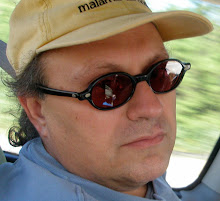Date: Friday, December 14, 1:30 pm
Speaker: Maria Elena Buszek
Maria Elena Buszek is a critic, curator, and assistant professor of modern and contemporary art at the Kansas City Art Institute. She is the author of numerous catalog essays for exhibitions in museums and galleries both in the United States and abroad, and her writing has appeared in such journals as Art in America, Woman's Art Journal, TDR: The Journal of Performance Studies, Photography Quarterly, and Surface Design Journal. Her 2006 book, Pin-Up Grrrls: Feminism, Sexuality, Popular Culture, was nominated for the College Art Association Charles Rufus Morey Book Award. Buszek is also a regular contributor to the popular feminist culture magazine, Bust. In addition to feminist theory and aesthetics, she has written on popular visual culture and contemporary crafts. She is currently editing the anthology Extra/ordinary: Craft Culture and Contemporary Art, examining the evolving relationship and tensions between traditional definitions of "art" and "craft" in the art world today.